Do you know how to PROPERLY clear a gun and make it “safe” step-by-step?
The truth is that there is no room for error in this procedure. A lot of people that have been negligently shot have been shot negligently because they ” …thought the gun was unloaded!”
If you don’t know how to properly “clear” a handgun and make it “safe” then you could very well take your own life, the life of your child, your spouse, your friend or some other innocent person!
Also, perhaps even more important, you should know WHEN to clear a gun to make it safe. The answer will probably surprise you!
Revisiting Firearms Safety Rule #1:
“All Guns Are Always Loaded”
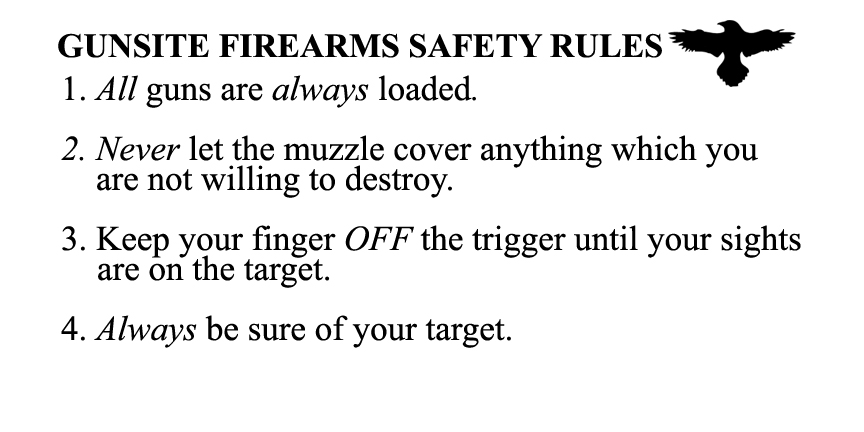 The firearms safety rules have been around 50+ years and they work for all types of firearms because they cover practically everything that you can do with a firearm.
The firearms safety rules have been around 50+ years and they work for all types of firearms because they cover practically everything that you can do with a firearm.
As long as they are obeyed, every single time, then it’s almost impossible to have a negligent shooting or other “accident” that could cause harm.
In fact, if everyone simply obeyed this 1 rule — then a reasonable, smart person would be able to figure out not to put their finger on the trigger or point it at someone or something they did not want to shoot.
(But we have the other rules for a reason. Because we don’t want to rely on intelligence to keep us safe. Simply follow the rules and nobody gets hurt. Simple.)
If You Treat ALL Guns As Loaded, Then You Only Have TWO Options Every Time You Pickup a Gun.
The beauty of this one simple rule was made clear to me, by the one and only Tom Givens. Tom sure does have a way of simplfying things. He writes:
“This leads to a simple two-way branch. If you want to shoot it, shoot it! If you wish to do anything else with it, then you must clear it first. Before you can clean it, tinker with it, paint the sights, tighten the grip screws, show it to your friend, or do anything else with it other than fire it, you must first clear it. When you clear a gun, you remove all ammunition, lock the action open, double check to make certain all ammunition is out, and leave the action open while you do any administrative handling of the firearm.”
That makes it pretty simple huh? Just two options.
It’s so simple I used my incredible photoshop skills to make an easy-to-follow flow chart for you:
So pop quiz time …
When Do You Have To “Clear” a Handgun To Make Sure It’s Unloaded?
Notice it says that if the gun EVER leaves your possession — out of your hands — you start all over again with the two choices.
Simple.
If you clear a gun, it’s unloaded and safe as long as it’s in your hands …
Then you set it down on the table … is it still safe when you pick it up?
NO!
Pick it up, and go back to the two choices. Shoot it or clear it.
If you are at a gun shop and the guy clears the pistol in front of you and hands it to you, is it safe and unloaded?
No. Now that it is in your possession, you have two choices. Shoot it or clear it.
If your buddy hands you a gun and says the infamous words, “Don’t worry, it’s unloaded!” Is it safe or unloaded? NO! Clear the damn gun!
This is the true meaning of “treat all guns as if they are loaded”.
By treating all guns as if they are loaded, you present yourself with only two correct options. If you need to shoot it, shoot it. If you need to do anything else with it, clear it.
How To Clear a Semi-Auto Handgun
Step 1: Remove Magazine
Without a magazine there is nothing to feed into the chamber of the semiautomatic pistol, so the first thing we will do is remove the magazine to cut off the supply of ammunition.
Step 2: Eject cartridge from chamber
Using the same manner that we clear malfunctions, we run the slide to eject the round from the chamber. Remember, we are assuming all guns are always loaded, so whether you think there is one there or not — you run the slide to eject it.
Step 3: Lock Slide To Rear To Visually And Tactile Confirm There is No Magazine and an Empty Chamber
Next, you are going to lock the slide to the rear to visually inspect the magazine well first (remember, without a magazine there is no source of bullets). Then visually inspect the chamber — you are looking for an EMPTY chamber — not brass. If you go looking for brass, you might see one, mentally see that you are right, and then close the slide leaving you with an empty gun. Think “is this chamber empty” not “is there a bullet in here”. It’s a small difference in intent, but it’s important. By tactile inspection, this means stick your finger in the chamber to make sure it’s empty. (By using your finger, you could essentially clear your gun in the dark and still be safe).
Step 4: Leave The Slide Open While Performing Any Administrative Action
Lastly, to make things easy on yourself, if you’re doing any administrative handling of the gun — then leave the slide locked to the rear. That way, if you have to put the gun down for some reason, you can simply pick it back up again and go to step 3 — confirming there is no magazine and no ammo in the chamber because the slide is already locked back. About the only time you would not leave the slide locked to the rear is if you are putting the gun back into your holster for dry fire practice (because dry fire is done with an unloaded gun).
How To Clear a Revolver
Step 1: Work The Cylinder Latch To Open The Cylinder
Like the semiauto pistol, we are first going to remove the ammunition source from the gun. So work the cylinder latch to swing the cylinder open. In this condition, even if all the cylinders were full of ammo — with the cylinder open — the gun can’t fire.
Step 2: Empty the cylinder
Use the little lever to empty the cylinder or otherwise dump out all the ammo from the cylinder. Simply turning it upside down should work with most revolvers.
Step 3: Check each individual chamber to be sure it’s empty
Now, the most important part. Visually and if necessary tactile confirm (with your finger) that each individual cylinder is empty. This is necessary because just dumping out all the ammo doesn’t always work.
Fun story: my first NRA instructor class — the instructor felt really bad because he accidentally left one round in one cylinder of a revolver that he thought he had unloaded. Luckily, he followed the next step so it wasn’t a problem.
Step 4: Leave The Cylinder Open
Again, with the cylinder open, do whatever you need to do. With the gun like this it can’t fire. Therefore it’s safest if you’re doing any administrative handling of the gun to leave the cylinder open.
Remember my first NRA instructor? This is what saved him. He left the revolver sitting there with the cylinder open, and one of the other students noticed it had one cartridge still in one cylinder. Who knows how he overlooked it but that’s why it’s important to follow all the steps.
Now You Know The TRUE Meaning Behind Firearms Safety Rule #1, Please Share This With Everyone You Know
If you know anyone who has guns, is thinking about using guns, or needs this info, PLEASE share this with them.
These are firearms rules we can all live by — even those of us that think we “know it all”.
In fact, most of the people who have negligent shootings — do so because of complacency because they think they “know it all”. Follow the firearms safety rules all the time.

![Case Study: Defensive Gun Use [Video] NSFW](/wp-content/uploads/2025/07/Depositphotos_282075792_S-218x150.jpg)
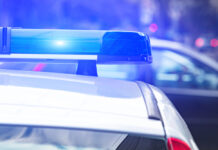
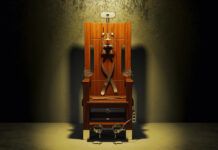
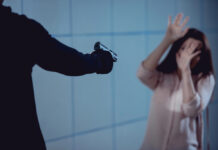
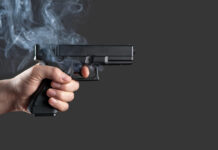




![What Level Holster Should You Be Using? [Video]](/wp-content/uploads/2024/04/Depositphotos_44548439_S-218x150.jpg)


![How Many Shots Will It Take? [Video]](/wp-content/uploads/2025/06/Depositphotos_2724272_S-218x150.jpg)


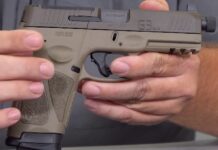


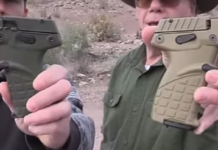
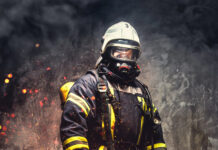


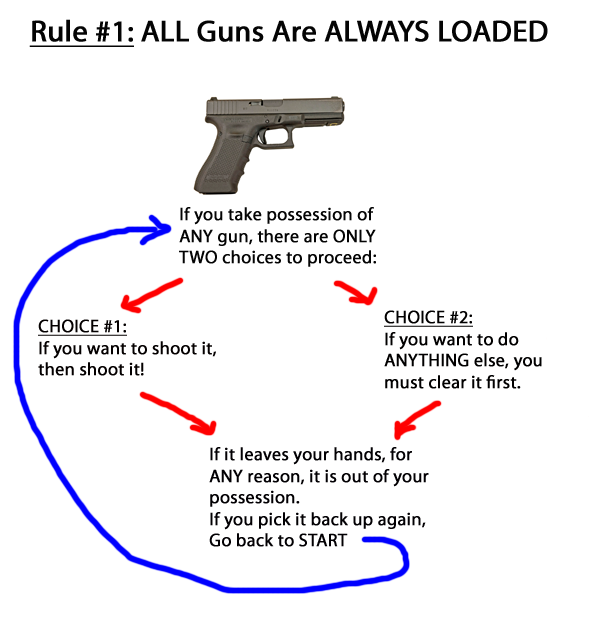









![Optic Ready vs Milled slides? [Video]](/wp-content/uploads/2024/02/image-3-100x70.png)
![[Checklist] What Gear You Need To Take Pistol, Rifle & Shotgun Training Courses [Video]](/wp-content/uploads/2023/07/Depositphotos_275087632_L-100x70.jpg)
![What is in Carter’s 2023 EDC? [Video]](/wp-content/uploads/2023/07/Depositphotos_146856137_L-100x70.jpg)



THAT’S THE WAY I WAS TAUGHT AS A YOUNGSTER BUT ON A 22 RIFLE, TAKE OUT THE CLIP, AND PULL BACK THE BOLT, I DO THE SAME WITH MY 22 MAG REVOLVER, ALL GUNS ARE LOADED UNTIL PROVEN TO BE UNLOADED !
John,
This is so common sense that I fail to understand how anyone can leave a loaded gun for others to accidentally shoot someone. I believe laziness is a major stumbling block. I wholeheartedly encourage all gun owners to do precisely what you have said for firearm safety. My dad started me on a .22 single shot rifle. I did fine until I made a huge blunder with a loaded double barrel shotgun. Not only did I injure myself but my dad injured my behind severely. I never made that mistake again. I stressed gun safety with my own children and no accidents ever occurred. Thank you for your very timely advice.
not to nick pick sir , yes always verify the condition of a firearm when you pick one up. just because you picked it up and verity that it is unloaded, ALL GUN ARE LOADED ALL THE TIME. THE VERIFYING IT IS UNLOADED DOES NOT MEAN IT IS UNLOADED. ALWAYS HAVE THE MUZZLE POINTED IN A SAFE DIRECTION, KNOW YOUR BACKSTOP BEYOND THE MUZZLE AND KEEP YOUR FINGER OFF THE TRIGGER UNTIL READY TO SHOOT. i do not think we can hear this stuff to often. all guns are loaded all the time
We have no Website
Handel all firearms as if they are Loaded.!i have a22pistel and it fires 7 rounds and it’s a Double Action ,thanks for the information.
This very informative and educative post thank you for sharing this.
Comments are closed.